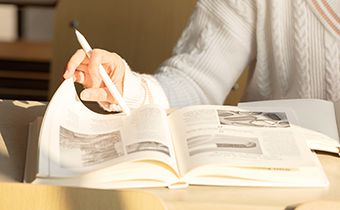教案课件是老师需要精心准备的,到写教案课件的时候了。在写好了教案课件计划后,才能够使以后的工作更有目标性!有没有好的范文是适合教案课件?以下是小编收集整理的“Unit 6 When was it invented?Section A 教案”,希望能为您提供更多的参考。
Unit6Whenwasitinvented?
SectionA1(1a-2d)
一、教学目标:
1.语言知识目标:
1)能掌握以下单词:heel,scoop,electricity,style,project,pleasure,zipper,daily,website,pioneer,list,mention
能掌握以下句型:
①—Whenwasthetelephoneinvented?
—Ithinkitwasinventedin1876.
②—Whataretheyusedfor?
—Theyareusedforseeingatnight.
2)能谈论物品被发明的时间、发明者,表达某发明的用途。
2.情感态度价值观目标:
了解一些近现代发明的时间及用途,激发自己热爱发明的情感。培养想象力,善于观察事物。面对难题,用积极的态度去解决,发挥想象力,认识世界,改造世界。
二、教学重难点
1.教学重点:
1)本课时的单词、词组和句型,学习运用一般过去时态的被动语态。
2)学会询问发明时间及用途的基本句型:
—Whenwasthetelephoneinvented?
—Ithinkitwasinventedin1876.
—Whataretheyusedfor?
—Theyareusedforseeingatnight.
2.教学难点:
运用一般过去时态的被动语态来讨论发明的发明时间及用途。
三、教学过程
I.Warmingup
1.展示一些近代发明的图片与近代发明的发明者,让学生们将图片与发明者相连。
T:Doyouknowwhattheseinventionsare?
S1:It’sacar.
S2:It’satelephone.
S3:It’satelevision.
T:Doyouknowwhotheseinventorsare?
S1:KarlBenz
S2:AlexanderBell
S3:J.L.Baird
LetSsmatchtheinventionsandtheinventors.
Ⅱ.Presentation
引导学生们学习一般过去时态的被动语态结构。
让学生们看大屏幕的如果爱和发明者的图片,并将句子改为被动语态。
如:
T:KarlBenzinventedthefirstcarin1885.
Thefirstcarwasinvented(byKarlBenz)in1885.
Ⅲ.Talking
1.Lookatthepicturesin1a.Discusswithyourgroup,inwhatorderdoyouthinktheywereinvented?Trytonumberthem[1-4].
2.Ssdiscusswiththeirpartnersandnumberthepictures.
3.Talkingabouttheinventions:
A:IthinktheTVwasinventedbeforethecar.
B:Well,IthinktheTVwasinventedaftertheTV.
Ⅳ.Listening(1b)
1.T:TellSslookatthepicturesandyearsontheleft.
2.PlaytherecordingfortheSstolisten.
3.Sslistentotheconversationandtrytomatchtheinventionwiththeproperyear.
4.Playtherecordingagain.
5.Checktheanswers.
Ⅴ.Pairwork(1c)
1.Sstrytoremembertheinventionandtheyear.
2.StudentB,coverthedates.StudentA,askStudentBwhenthethingsinthepicturein1bwereinvented.Thenchangerolesandpracticeagain.
3.Letsomepairsaskandanswerinpairs.
e.g.A:Whenwasthetelephoneinvented?
B:Ithinkitwasinventedin1876.
…
Ⅵ.Learningthenewwords民族的
nation(国家)+al→national
e.g.Thegroupofdancersworenationaldress.
那群跳舞演员穿着民族服装。
7.withoutdoubt毫无疑问;的确
e.g.LiNa,withoutdoubt,isthebesttennisplayerinChina.
毫无疑问,李娜是中国最优秀的网球运动员。
8.takeplace发生;出现
①是不及物动词,不能用于被动语态;常指事先安排或事发有因的事情。
e.g.Hersister’smarriagetookplaceat8:00today.
她姐姐的婚礼今天八点举行。
②辨析:happen则常指偶然发生的事情
e.g.IhappenedtoseePeteronmywaytothemuseum.
在去博物馆的路上我碰巧遇到皮特。
9.ItissaidthataChineserulercalledShenNongwasthefirsttodiscover
teaasadrink.据说有一位叫作神农的中国统治者最早发现了茶可以饮用。
Itissaidthat…是个常见句式,表示“据说……”,that后面接完整的句子。
e.g.ItissaidthatthirteenisanunluckynumberinmanyWesterncountries.
据说在许多西方国家13是个不吉利的数字。
本单元还有一个类似的句式:
Itisbelievedthat…,意思是“人们认为……”,其后同样接完整的句子。
e.g.ItisbelievedthatteawasbroughttoKoreaandJapanduringthe6thand
7thcenturies.
人们认为,茶在六至七世纪传到了朝鲜和日本。
10.《茶经》是我国唐代一部有关茶叶及品茶的专著,作者陆羽。该书共
分三卷十节,全面叙述了茶叶生产的历史,源流,生产技术以及饮茶
技艺和茶道原理,享有“茶叶百科全书”之美誉。
VI.Exercises
一、选词填空
smell,remain,ruler,boil,national
1.October1stis__________DayinChina.
2.Humansarethe_____oftheearth.
3.Whenfishgoesbad,it_______terrible.
4.They_________inthatforestforayear.
5.Water______at100℃.
二、根据汉语提示完成句子。
1.Ifoundthekey__________(偶然)whenIwascleaningthehouse.
2.TheMay4Movement___________(发生)inBeijingin1919.
3.He’llsucceed____________(毫无疑问)thistime.
4.________(据说)ShenNongwasthefirsttodiscoverteaasadrink.
5.Tea_________________(被带到)KoreaandJapanduring6thand7thcenturies.
Homework
1.Readthepassageseveraltimesafterschool.
2.Makesentenceswiththesewords:
byaccident,itisbelievedthat,takeplace,nodoubt,beusedfor,fallinto
SectionA3(GrammarFocus-4c)
一、教学目标:
1.语言知识目标:
1)学习掌握下列词汇:fridge,low,somebody,translate,lock,earthquake,sudden,all
ofasudden,biscuit,cookie,instrument
2)进行一步复习巩固学习SectionA部分所学的生词和词组。
3)进一步学习运用一般过去时态的被动语态。
4)掌握主动语态变被动语态的方法,并通过不同方式的练习,来熟练运用。
2.情感态度价值观目标:
培养想象力,善于观察事物。面对难题,用积极的态度去解决,发挥想象力,认识世界,改造世界。
二、教学重难点
1.教学重点:
1)学习生词fridge,low,somebody,translate,lock,earthquake,sudden,allofasudden,biscuit,cookie,instrument
2)复习巩固SectionA部分所学的生词和词组,达到熟练运用的目标。
2.教学难点:
1)一般过去时态的句子变为被动语态。
2)综合运用所学的知识进行练习运用。
三、教学过程
Ⅰ.Warming-upandrevision
1.Haveadictationofthenewwordslearnedinthelastclass.
2.Reviewsomemainphraseswelearnedinthelastclass.Checkthehomework.
3.LetsomeSstellsomethingabouthowteawasinventedbyaccident.
Tellsomethingabouthowteawasinventedbyaccident.
OnedayShenNongwasboilingdrinkingwateroveranopenfire.Someleavesfromateaplantfellintothewaterandremainedthereforsometime.
Itproducedanicesmellsohetastedthebrownwater.Itwasquitedeliciousandoneoftheworld’sfavoritedrinkwasinvented.
TellsomethingaboutLuYuandhisChaJing.
LuYu“thesaintoftea”mentionedShenNonginhisbookChaJing.Thebookdescribeshowteaplantsweregrownandusedtomaketea.Italsodiscusseswherethefinesttealeaveswereproducedandwhatkindsofwaterwereused.
ItisbelievedthatteawasbroughttoKoreaandJapanduring6thand7thcenturies.InEngland,teadidn’tappearuntilaround1660.TheteatradefromChinatoWesterncountriestookplaceinthe19thcentury.
Ⅱ.GrammarFocus.
1.学生阅读GrammarFocus中的句子,然后做填空练习。
①拉链是什么时候被发明的?
___________thezipper________?
②它于1893年被发明。
It_______________in1893.
③它是由谁发明的?
___________itinvented______?
④它是由惠特科姆•贾得森发明的。
It_________________WhitcombJudson.
⑤茶叶什么时候被带到朝鲜去的?
___________tea________toKorea?
⑥茶叶在六到七世纪之间被带到朝鲜。
It____________toKorea________the6thand7thcenturies.
⑦热冰淇淋勺用来做什么?
What____thehotice-cream__________?
⑧它用于挖很冷的冰淇淋。
It’s_________________reallycoldice-cream.
⑨电话机在1876年被贝尔所发明。
Thetelephone__________________AlexanderGrahamBellin1876.
⑩贝尔于1876年发明了电话机。
AlexanderGrahamBell_________thetelephonein1876.
2.学生们根据记忆,看大屏幕来完成填空练习。
3.学生们完成填空试题后,可以打开课本检查答案,对错误的句子,单独进行强化记忆。
Ⅲ.Grammar
一般过去时态的被动语态的构成
英语有两种语态:主动语态和被动语态。主动语态表示主语是动作的执行者,而被动语态则表示主语是动作的承受者。如:
Wecleanedtheclassroomyesterday.
我们昨天打扫了教室。
(主动语态,主语we是clean这一动作的执行者)
Theclassroomwascleanedyesterday.
教室昨天被打扫。
(被动语态,主语theclassroom是clean这一动作的承受者)
一、一般过去时被动语态
一般过去时被动语态的结构为“主语+was/were+及物动词的过去分词(+by+动作的执行者).”。如:
Treeswereplantedlastspring.
去年春天种了树。
1.肯定句:
主语+was/were+及物动词的过去分词+其他.
PaperwasinventedbyChinesepeopletwothousandyearsago.
纸是中国人在二千多年前发明的。
2.否定句:
主语+was/werenot+及物动词的过去分词+其他.
Womenwerenotallowedtotakepartinthegamesatfirst.
开始妇女不允许参加奥运会。
3.一般疑问句:
Was/Were+主语+及物动词的过去分词+其他?
Werethesepicturesdrawnbyyoursister?
这些图片是由你妹妹画的吗?
二、被动语态的用法:
1.不知道谁是动作的执行者,或没有必要指出谁是动作的执行者。
e.g.Englishisspokenallovertheworld.全世界都在说英语。
2.需要突出或强调动作的承受者。
e.g.Thisdictionaryisusedbymoststudents.
这本字典是大多数学生在用的。
三、主动语态变被动语态应注意的问题
1.有些短语动词相当于及物动词,变为被动句时介词或副词不能去掉。
Theyputoffthemeetingbecauseoftheweather.
Themeetingwasputoffbecauseoftheweather.
会议因天气的缘故被推迟了。
2.含有双宾语的主动句变为被动句时,通常把指“人”的间接宾语变为主语,指“物”的直接宾语保留不变;如果把指物”的直接宾语变为主语,则在间接宾语前加to或for。
Myauntgavemeane-dictionaryyesterday.
Iwasgivenane-dictionaryyesterday.
Ane-dictionarywasgiventomeyesterday.
3.主动句中感官动词see/hear/watch/feel等和使役动词make/let/have等后跟省略to
的动词不定式,变为被动语态时应加上不定式符号to。
Isawaheavymanenterthehouse.
Aheavymanwasseentoenterthehouse.
4.系动词、不及物动词或某些短语动词(happen,takeplace,cometrue,fallasleep…)没有被动语态。
WhathappenedtoMr.Brown?
布朗先生发生了什么事?
Ⅳ.Exercises
练一练
将下列句子变为被动语态。
1.Hechosesixstorybookstheotherday.
Sixstorybooks____________byhimtheotherday.
2.UncleLeegaveJackalargecakeforhepaintedthewallwonderfully.
Jack___________alargecakeforhepaintedthewallwonderfully.
3.Amouseatehalfofthecakelastnight.
Halfofthe_________byamouselastnight.
将下列句子变为主动语态。
4.WerethesemachinesinventedbyEdison?
_______Edison_______thesemachines?
5.ThepostcardwassenttoLindabyPaul.
Paul_______thepostcard_______Linda.
6.AmericawasdiscoveredbyColumbus.
_______Columbusdiscovered_________?
Ⅴ.Practice
Workon4a:
1.TellSstoreadthesentencesin4aandrewritethesentencesusingthepassivevoice.
2.做题方法点拨示例:
①点拨:原句为一般过去时态,原句的谓语动词为sold,宾语为thefridge;改为被动语态时,应将thefridge作主语,谓语动词用wassold的形式。
Theysoldthefridgeatalowprice.→
Thefridgewassoldatalowprice.
②点拨:分析原句的句子结构可知,stole是谓语动词,mycamera是句子的宾语;改为被动语态句时,应将mycamera作句子主语,谓语动词用wasstolen的形式。
Somebodystolemycamerafrommyhotelroom.→
Mycamerawasstolenfrommyhotelroom.
学生们自主将其他三个句子变成被动语态。
3.最后,教师与同学们一起校对答案,并对学生们有疑问的地方进行解释,或做出合理的分析点拨。
Wherewerethesephotostaken?
Wewereadvisednottogooutalone.
Thebookwastranslatedintodifferentlanguagesbydifferentwriters.
Workon4b:Completethesentenceswithcorrectformsoftheverbsinthebox.
1.让学生们阅读方框中的词汇,了解词汇及句子的意思,为进行填词做好准备。
eat,like,invite,tell,lock,ring,break,bring
2.认真阅读每个句子,根据上下文确定空格处应填的意思。
3.逐句进行分析推敲,然后分析句子的时态及语态,用适当的形式填空。
1)You____________tothepartylastnight,weren’tyou?Whydidn’tyougo?
2)Theearthquakehappenedallofasudden,butluckilythevillagers_____________toasafeplace.
3)Thedoor___________whenwearrived,sowe______thebell.
4)Thestudents___________nottoeatordrinkinclass,butRuby______therulewhenshestartedeatingabiscuitinscienceclass.
5)Thecookies__________bythehungrykidsinlessthan20minutes,andtheyreally_____them.
4.最后,通读一遍所有句子,进行综合理解,看句子的意思是否通顺,合理。
5.ChecktheanswerswiththeSs.
1.wereinvited2.werebrought
3.waslocked,rang(前一句中,门是被锁的,故应用被动语态;后一句中,我们去按门铃,是主动语态。)
4.weretold,broke(前一句中,学生们是被告诉不要做这些事情,故应用被动语态;后一句中,Ruby违反规则,则是主动语态。)
5.wereeaten,liked(前一句中,饼干是被孩子们吃掉了,故应用被动语态;后一句中,孩子们喜欢这些饼干,则是主动语态。)
Ⅵ.Practice
Workon4c:Decidewhetheractiveorpassiveformsshouldbeusedinthesesentences.Writethecorrectformsintheblanks.
1.先通读小短文,了解大意。
Thetelephone______________(invent)byAlexanderGrahamBell.He__________(born)in1847.Mr.Bell________(work)ontheinventionofthetelephonewithThomasWatson.
In1875,Mr.Bell_________(learn)howtosendmusicalnotesthroughaninstrumentsimilartoatelephone.Finally,thetelephone_____________(invent)in1876.Thefirstsentencethat_________(say)onthetelephonebyMr.Bellwas“Mr.Watson,comehere;Iwanttoseeyou.”Todaythetelephone________(use)aroundtheworld.
2.逐句分析每一句话的意思,确定句子主语和谓语动词之间主动或被动关系。
3.结合句子的时态,填上正确的形式。
4.复读短文,看是否通顺。
5.Checktheanswers
Homework
补全下列主动句变被动句。
1.Jennyputherclothesinthesuitcaselastnight.
Herclothes________inthesuitcaselastnight.
2.ThetwinssanganEnglishsongthatday.
AnEnglishsong____________bythetwinsthatday.
3.Didtheybuildabridgehereayearago?
____abridge____herebythemayearago?
4.Theysoldoutthelightgreendressesyesterday.
Thelightgreendresses______________out.
SectionB1(1a-2e)
一、教学目标:
1.语言知识目标:
1)能掌握以下单词:crispy,salty,sour,bymistake,customer,theOlympics,Canadian,divide,divide…into,basket,popularity,lookupto,hero,professional
2)能掌握以下句型:
①Potatochipswereinventedbymistake.
②ItisbelievedthatthefirstbasketballgameinhistorywasplayedonDecember21,1891.
③Dr.Naismithdividedthemeninhisclassintotwoteamsandtaughtthemtoplayhisnewgame.
④Atthesametime,theyneedtostopthecompetingteamfromgettingtheballintotheirownbasket.
⑤Thesestarsencourageyoungpeopletoworkhardtoachievetheirdreams.
2.情感态度价值观目标:
了解世界上一些对人类有着重大意义的发明的相关信息,开阔学生的眼界,养成勤于思考,善于发现的好习惯,培养学生的创造精神。
二、教学重难点
1.教学重点:
1)掌握本课时出现的生词及用法。
2)进行听力训练,提高综合听说能力。
3)阅读短文,获得相关信息,提高学生们的综合阅读能力。
2.教学难点
1)听力训练
2)阅读2b部分的短文并完成相关要求。
三、教学过程
Ⅰ.Warmingup
1.LetSswatchaninterestingpicture.
2.Asksomequestionsaboutthem.
1.Whatdidtheyeat?
S1:Icecream.
2.Whatdidthebigdogthinkoftheice-cream?
S2:Sweet,cool,anddelicious!
Welllet’slookatsomeotherdeliciousfood,please.
Ⅱ.Talking
Workon1a
1.TellSsthatthewordsintheboxdescribehowfoodcantaste.Writethemunderthecorrectpictures.Somepictureshavemorethanoneword.
2.Ssworkwiththeirpartnersandtrytowritesomeproperwordsunderthepictures.
3.LetsomeSsreadtheiranswers.Trytorememberthenewwords.
Workon1b
1.LetsomeSsreadtheadjectivewordsinthebox.Makesuretheyallknowthemeaningofeachword.
2.Ssdiscusswiththeirpartners.Trytowritethenameofadifferentfoodaftereachword.
Learnthenewwordstogether:
Ⅲ.Listening
Workon1c
1.TellSstheconversationisabouthowthepotatochipswereinvented.Thestoryisveryinteresting.
2.First,letoneSsreadthesentencesin1c.Makesuretheyknowthemeaningofeachsentence.
1.Potatochipswereinventedbymistake.
2.Theywereinventedin1863.
3.Thecustomerthoughtthepotatoeswerenotthinenough.
4.Thecustomersaidtheywerenotsaltyenough.
5.Georgewantedtomakethecustomerhappy.
6.Thecustomwashappyintheend.
3.PlaytherecordingfortheSs.Listenforthefirsttime.PlaytherecordingagainandjudgeTorF.
Keys:T,F,T,F,F,T
4.Listenandanswerthequestions.
1.Whoinventedpotatochips?
2.Whenweretheyinvented?
3.Whatdidthecustomorderattherestaurant?
4.WhatdidthecustomthinkofthepotatochipsGeorgecookedatfirst?
5.HowdidGeorgecookthepotatoesthen?
Workon1d
1.LetSsreadthearticlein1dfirst.TellSstolistenagainandfillintheblankswiththerightwords.
2.PlaytherecordingagainfortheSstolistenandwritethewords.
TheHistoryofPotatoChips
Doyouknowhowpotatochipswereinvented?Potatochips____________byacookcalledGeorgeCrum.Theywereinventedin____.
GeorgeCrumcutthepotatoesreally,really____andthencookedthemforalongtimeuntiltheywere_____.Finallyheputlotsofsaltonthemsotheywere____.
Keys:wereinvented,1853,thin,crispy,reallysalty
Ⅳ.Pairwork
1.Workinpairs.Makeaconversationabouttheinventionofpotatochips.Usetheinformationin1cand1d.
2.Asksomepairstoactouttheirconversationinfrontoftheclass.
Ⅴ.Discussion
Showsomepicturesofplayingbasketball.AskSssomequestionsaboutbasketballgames.Discussthesportwithyourpartnerandshareyourideaswiththeclass.
e.g.
T:Doyoulikebasketball?(What’syourfavoritesport?)
S1:Sure.Ilikeitverymuch.
T:Doyouwatchbasketballgames?
S2:Yes.IliketowatchtheNBAandCBA.
T:Doyouknowthehistoryofbasketballgame?
Ⅵ.Reading
FastReading
TellSstoreadthepassagequickly.Andfindthemainideaofeachparagraph.
Keys:1.Themainhistoryofbasketball.
2.HowthebasketballwasinventedbyJames.
3.Thepopularityofbasketballaroundtheworld.
CarefulReading
1.T:Nowlet’sreadthemindmapin2c.Trytounderstandthemeaningofthemap.
AskSstocompletethemindmapwiththeinformationinthepassage.
Mind-mapping
Changingtheinformationyoureadintoamindmapmayhelpyourememberitmoreeasily.
2.Ssreadthepassagecarefullyandtrytofillinthemindmapwiththeproperwords.
Development:
inventedby______________
firstgameon________________
becameOlympiceventin______intheyear______.
mostfamousgames:_____
populargamesinChina:_____
Game:
playedinsideonahard_____.
____teams
get_______intootherteam’s______.
Popularity:
playedby__________________people.
over____countries
3.Checktheanswerswiththeclass.
4.TellSstoworkhardandaddsomethingtothemindmap.
EncourageSstotrytheirbest.
Postreading
Workon2d
1.Nowlet’sworkon2d.Firstreadthequestionsbelow.Thentrytoreadthepassageagainandfindtheanswerstothequestions.
2.Ssreadthepassageagainandtrytofindtheanswerstothequestions.
1.Whoinventedbasketballandhowisitplayed?
2.Whenwasthefirstbasketballgameinhistoryplayed?
3.WhyweretheBerlinOlympicsimportantforbasketball?
4.WhataretheprofessionalbasketballgroupsinAmericaandChina?
5.Howpopularisbasketball?
3.LetsomeSsreadtheiranswersandcorrecttheirmistakes.
Ⅶ.Languagepoints
1.Potatochipswereinventedbymistake.
bymistake错误地;无意中
e.g.Somebodytookthemyumbrellabymistake.有人错拿了我的伞。
Ipickedupyourbagbymistake.我错拿了你的包。
2.Dr.Naismithdividedthemeninhisclassintotwoteams…
dividev.分开;分散
divide…into…把……分开;分散
e.g.Shedividedtheorangeintoquartersandeachateapiece.
她把橙子分成四份,每人吃一份。
3.Today,thepopularityofbasketballhasrisenaroundtheworld,withmanyyoungpeopledreamingofbecomingfamousplayers.
1)todayadv.修饰整个句子,表示当前的一段时间,“如今;当今”。
e.g.Today,onlyafewkindsofthesebeautifulanimalsstillliveontheearth.
现今,这些美丽的动物只有少数几种还生活在地球上。
2)with与在意义上有主谓关系的复合结构manyyoungpeopledreamingof…构成短语,用作状语。
4.Basketballhasnotonlybecomeapopularsporttoplay,butithasalsobecomeapopularsporttowatch.
notonly…,butalso…不但……而且……若连接两个成分作主语,谓语动词与靠近的主语保持一致。
e.g.Notonlythestudentsbutalsotheirteacherisenjoyingthefilm.
不仅学生们在欣赏这部影片,他们的老师也在欣赏这部影片。
5.Thenumberofforeignplayers,includingChineseplayers,intheNBAhasincreased.
1)number表示数量。由于是单数形式,谓语动词需要与之相配,为hasincreased。这种主语和谓语在数上的匹配称作“主谓一致”。当主语为复数概念是,谓语动词用复数形式与之匹配;当主语为单数概念时,谓语动词则用单数形式。
e.g.Peoplethereareveryfriendly.people为复数概念。
TheUnitedNationsisaninternationalorganizationthattriestofindpeacefulsolutionstoworldproblems.theUnitedNations是一个组织,为单数概念。
2)thenumberof…“……的数量;……的数目”。作主语时,谓语动词应用单数形式。
anumberof…“若干的,一些”,修饰可数名词。作主语时,谓语动词应用复数形式。
e.g.Thenumberofpeoplekilledintheaccidenthasn’tbeenannouncedyet.
这次事故中的死亡人数尚未公布。
Anumberofpeopleareunhappywiththisdecision.
一些人对这项决定并不满意。
6.Manyyoungpeoplelookuptothesebasketballheroesandwanttobecomelikethem.
lookupto钦佩;仰慕
e.g.Theartistislookeduptoforhislandscapepaintings.
这名画家以风景画受人仰慕。
拓展:look词组
lookback回头看;回顾
lookdownupon(on)看不起,轻视
lookforwardto盼望,期待
lookinto朝......看去;调查
looklike看上去象
lookon旁观,观望
lookout当心,小心,留神
lookthrough浏览;透过......看
lookup查阅;抬头看
Ⅷ.Discussion
Workon2e
1.AskSswhattheythinkoffamousbasketballplayers.Makealistofgoodanddifficultthingsaboutbeingabasketballplayer.
2.Ssworkingroups.Discussthemwiththeirpartnersandmakealist.
3.Letsomegroupsreadtheirlists.
Homework
Writeashortpassageaboutthedevelopmentofbasketball.
SectionB2(3a-SelfCheck)
一、教学目标:
1.语言知识目标:
1)复习一般过去时态被动语态的用法。
2)能够用英语讲述自己所熟悉的某一发明的简单过程。
3)能用就本单元所学习的寓言故事等语言材料,进行完型填空。并用英语介
绍某一发明的简要过程。
2.情感态度价值观目标:
了解世界上一些对人类有着重大意义的发明的相关信息,开阔学生的眼界,养成勤于思考,善于发现的好习惯,培养学生的创造精神。
二、教学重难点
1.教学重点:
1)用英语介绍某一发明的简要过程。
2)掌握本单元所学的词汇、句型及语法知识,并能进行综合练习运用。
3)完成Selfcheck部分的练习试题。
2.教学难点:
用英语介绍某一发明的简要过程。
三、教学过程
Ⅰ.Revision
1.ReviewtheexpressionsandsentencesinSectionB1.
2.Checkthehomework.
LetSsintroducethehistoryofbasketball.
Ⅱ.Leadin
1.AskSswhichinventiontheylikebest.
Ssthinkabouttheirfavoriteinventions.
2.LetsomeSstalkabouttheirfavoriteinventions.
Ⅲ.Thinking
1.AskSswhatthingstheydon’tliketodo.
e.g.Problem:quicklytakingnotesinclass.
2.Discussingroupandthinkofaninventionthatcouldhelpyou.
e.g.Newinvention:aspecialpen
Whatitisusedfor:takingnotesquicklyinclass
3.Ssdiscussingtheproblemsandtrytomaketheirownnotes.
4.LetsomeSsreadtheirnotestotheclass.
Ⅳ.Writing
Workon3b:
1.TellSstowriteadescriptionofyournewinvention.
2.Thefollowingsentencestructuremayhelpyou.
常用句型:
①Ithink…isaveryusefulinvention.
我认为……是一项很有用的发明。
②…wasinventedby…
……是由……(某人)发明的
③…wasinventedin…
……是在……(某时间)发明的
④Itwasusedfor…它被用来……
⑤…ismadeof………是由……(材料)制成的
Ⅴ.SelfCheck
WorkonSelfCheck1:
1.Readthewordsintheboxandmakesuretheyknowthemeaningofeachword.
2.Readthepassageandtrytofillintheblankswiththeproperword.
3.Readthepassageagain.Checkiftheformsofthewordsarecorrect.
3.LetsomeSsreadtheiranswers.Correctthemistakes.
WorkonSelfCheck2
1.TellSstorewritethesentencesusingthepassivevoice.
2.方法指导:
复习一般过去时态的被动语态的句子结构。
复习将主动语态句子变为被动语态句子的过程。
3.Ssworkbythemselvesandtrytorewritethesentences.
4.Checktheanswerswiththeclass.
WorkonSelfCheck3
Findoutinformationaboutaninventionyouwouldliketoknowmoreaboutandwritesentencesbelow.
Invention:__________
When:_____________
Who:_____________
Purpose:__________
Exercise:
Iftimeisenough,dosomemoreexercisesonbigscreen.
一、用所给单词的适当形式填空
1.Duringtheafternoon,therewasa_______(suddenly)heavyfallofsnow.
2.Ithinkthetelephone_____________(invent)beforethecar.
3.The__________(Canada)songAlouette(百灵鸟)isafunsongaboutabird.
4.They____________(invite)totakepartintheMayDaycelebrationsinBeijing.
5.The___________(popular)ofprivatecarsischangingthepeople’slifestyle.
6.Whenthebill____________(bring)tohim,hewassuchsurprised.
7.Theygavetheirlivesfortheircountryandwerehonoredas________(hero).
8.We___________(divide)intoeightgroupsbyourteacherlastweek.
Homework
1.试着向你的朋友用英语讲述篮球的发展过程。
2.用下列词汇造句子。
lookupto,bymistake,dailyactivities,Itissaid,allofasudden,fallinto,atthe
Olympics
精选阅读
Unit 9 When was it invented? Section A 学案
Unit9Whenwasitinvented?学案
SectionA
教师寄语:It’snevertoolatetomend.亡羊补牢,犹为未晚。
学习目标:
学习一般过去时的被动语态和特殊疑问句。
教学重难点:
一般过去时态的被动语态
基本结构:助动词be(was/were)+及物动词的过去分词
Athiefwascaughtlastnight.
Theywereaskedtospeakatthemeeting.
肯定式:Itwasmade.
否定式:Itwasnotmade.
疑问式:Wasitmade?No,itwasn’tYes,itwas
学习过程:
1.情境导入:warm-up
Askthestudentstobefamiliarwiththewordsbelowaccordingtothepicturesoncomputer.
Telephone,calculator,car,personalcomputer,TV,electriclight,lightbulb,alarm,clock,microwaveoven,electricslipper.
2.自主学习:presentation
1)教学Whenwasthecarinvented?Itwasinventedin……
Choosethethreeinventionsoftheseandaskstudentstoguesswheneachonewasinvented.
Forexample,youmightchoosecar,telephone,andpersonalcomputer.
Haveseveraldifferentstudentsguessandwritethedatesontheboard.Asktheclasstorepeatthequestionsandanswers.
[T=Teacher,S=Student]
T:Whenwasthecarinvented?(Classrepeat.)
T:Good.NowJackie,whatwasyourguess?
S1:1900
T:OK.Jackie,repeatafterme.Thecarwasinventedin1900.
Repeattheprocesswithseveraldifferentinventions.
Atlast,makestudentsfindouttherealdates.
2)教学Whowerethelightbulbsinventedby?Andwhataretheyusedfor?
呈现Edisonandlightbulbs的画面。
TellthestudentsEdisoninventedlightbulbs.
Thenaskthestudentstoanswerthequestionsbelow.
T:Whowerelightbulbsinventedby?(Classrepeat)
T:Good.NowClassrepeatafterme.TheywereinventedbyEdison.
3.合作探究:
1)教学操练1a,1c,2c
学生看书本上1a的图画,根据图画,把1a,1c,2c中的语言点综合起来,叫学生相互间回答问题。并用刚刚学到的目标句型来操练。最后,抽查几对学生,让他们在全班面前,按要求进行对话。
2)教学1b,2a,2b
首先,帮助学生明确本题的要求。接着,听力练习,学生根据录音内容完成1b,2aand2b.
最后,重放一遍录音内容,学生跟读。
4、拓展创新:
ConsolidationandExtension.
完成一个任务
Asksomestudentstoreadaboutaninventionusinganencyclopediaorotherbookfromthelibrary,orbylookingupinformationontheInternet.Havethestudentswriteupashortreportanddrawasimplepictureoftheinventionorbringinaphotoofit.Askeachstudentstoshowthepictureandreadhisorherreporttotheclass.
5.梳理知识:本单元主要学习了一般过去时的被动语态,包括其结构与用法。利用几项发明创造练习这一知识,最后用一篇小报告来完成写作练习。
6.达标测试:
(一)根据时间和人物写出发明物。
1)1885____________2)1876________________3)1927____________
4)1976________________5)JulieThompson_________6)ChelseaLanmon______
(二)汉泽英
1)计算机是何时发明的?
2)谁发明了计算机?
3)计算机是用来做什么?
4)你认为什么是最有用的发明?
5)它能够给人们更多时间工作和玩。
典型例题解析:
1.--Whataniceclassroom!--It____everyday.
A.iscleaningB.hascleanedC.mustcleanD.iscleaned
解析:推测这句话的意思应该是“它每天都被打扫”,考查被动语态的结构be+动词的过去分词。因此答案应该选D。
2.IknowBeijingwell.I____therethreetimes.
A.willgoB.havebeenC.wentD.havegone
解析:推测这句话的意思“我很了解北京,我去过那三次”。表示去过应该采用的时态是现在完成时,因此可排除A和C,区别havebeen和havegone,havebeen去过;havegone去了(还没回来)。因此应该选择B。
中考连接:
1.--Lookatthesignontheright.--Oh,smoking____here.
A.doesn’tallowB.isn’tallowedC.didn’tallowD.wasn’tallowed
2.--Willyoucometothedinnerparty?--Iwon’tcomeunlessJim______.
A.can’tbeinvitedB.wasinvitedC.willbeinvitedD.isinvited
课后反思:
说一说这节课你学到了什么知识?
Unit9Whenwasitinvented?
SectionB
教师寄语:Virtuenevergrowsold.美德永不老。
学习目标:
1、熟练掌握被动语态用法。
2、学会用被动语态表达对创造和发明事物的认识和看法。
教学重难点:主动语态被动语态
1.主动结构的宾语变为被动结构的主语;
2.主动结构的谓语动词由主动语态变为被动语态;
3.主动结构的主语变为介词by的宾语,组成介词短语,放在被动结构中谓语动词之后。在动作的执行者无须说明或不必强调时,by短语可以省略。
4.主动语态、被动语态两种时态要保持一致:
Werepairedthemotor.
Themotorwasrepairedbyus.
教学过程:
1.情境导入:Warm–up:
Askthestudentstopracticespeaking.
A:Whenwas……invented?
B:Itwasinventedin……
A:Whowasitinventedby?
B:Itwasinventedby……
A:Whatisitusedfor?
B:Itisusedfor……
2.自主学习:Presentation.
1)教学helpful,annoying
Askstudentstogivesomeexamplestoshowwhateachwordmeans.Forexample.
Avacuumcleanerishelpful.Averyloudtruckisannoying.
2)教学3a
呈现alarmclock,lightbulb,microwaveover,tea,andsoon的画面。Thenaskthestudentsthefollowingquestions.
T:Isthelightbulbusefulorannoying?(Opinionsmaydiffer.)
S1:Ithinkit’suseful.
T:Whyisit?
S1:Well,itgivespeoplemoretimetoworkandplayeveryday.
Thenaskthestudentstomakealistoffivehelpfulinventionsandfiveannoyinginventionsontheirown.Givetheclassaboutfiveminutestodothis.
3.合作探究:教学操练3b
Askthestudentstoworkinpairthefollowingtalkusingthetargetlanguage.
A:Whatdoyouthinkisthemosthelpful/annoyinginvention?
B:Ithinkthemosthelpful/annoyinginventionis……
A:Whyisthat?
B:Well,itgivespeople……
4.拓展创新:ConsolidationandExtension
Imaginethatyouarealoneonatinyisland,Choosefiveinventionsyouwouldliketohaveontheislandwithyou.Tellthegroupwhatyouchoseandwhy.
5.梳理归纳:
本节课主要的内容是主动与被动语态的练习转换。
6.达标测试:
句型转换
1.Shewasseentocomeoutofthelibrarybyhim.(变被动语态)
2.Whenaretreesoftenplanted?(变被动语态)
3.TheLeaguewasfoundedinGuangzhouin1922(就画线部分提问)
4.Didthestudentsweartheschoolclothesalot?(变被动语态)
5.Katetookgodcareofthebabyyesterdayevening.(变被动语态)
6.Hisauntboughthimabicycle.(变被动语态)
7.Hisauntboughthimabicycle.(变被动语态)
典型例题解析:
1.老人们被照顾地很好。Theold____________afterwell.
解析:这个题主要考查被动语态的结构be+动词的过去分词和应用,在本题中应该是belookedafter.
2.Youcanusethebox______thetoys.
A.carryB.carryingC.tocarryD.carried
解析:在这个题目考查一个短语的应用usesthtodo利用某物做某事,因此答案为C。
中考连接:
1.AlthoughTomfailedthegame,_____hesaidhewouldtryagain.
A.B.andC.butD.because
2.Imustpractice_____English,becauseit’simportantwhiletalkingwithaforeigner.
A.speakB.tospeakC.speakingD.speaks
课后反思:
想想这节课还有哪些知识没掌握?
Unit 4 When was it invented? Section B教案2
Unit4Whenwasitinvented?SectionB
知识目标:Afterlearningthetext,requirethestudentstomasterthephrasesbelow
(通过学习,掌握下列词语)
invent,populardrink,byaccident,not…until,discover,accordingto,Chineselegend,boil,anopenfire,fall(fell)into,remain(ed),notice(d),produce(d),inthisway
能力目标:1.Practicethestudents’listeningability.(听力训练)
2.Askthestudentstounderstandthepassageverywellandanswersome
questionsaccordingtothepassage.
(能够正确理解本文含义,回答相关问题。)
3.Usefulphrasesforthestudentstoretellthenewtext.
(利用关键词语,能够复述课文大意。)
情感态势:Trainthestudentstousetheirheadsandmakesomeinventionsinlife.
(开动脑筋,培养发明创造能力。)
学习策略:1.chips’history(aforeigninvention)→tea(Chineseinvention)
2.workingroupsandsolveproblemstogether
教学流程:
Step1Wordsrevision
Dictation:______________________________________________________________________________________________________________________________________________________________________________________________________________________________________________________
Step2Alisteningtest
Thehistoryofpotatochips
①_____________________thatpotatochipswereinventedbymistake?
Potatochips②_______________byachefcalledGeorgeCrum.Theywereinventedin
③__________.GeorgeCrumcookedthemforalongtimeuntilthey④__________.Andhesprinkledlotsofsaltonthemsotheywere⑤__________.
Step3Workingroups,readthroughthepassage,andthenanswersomequestions.
Step4Findoutthefollowingpoints:
1.although__________________________________________________________________
eg.用although/though或but填空
__________heisveryold,hestillworkshard.Heisveryold,__________hestillworkshard.
2.over在本文中的2种解释
①________________100多年前______________同义词_____________
②________________河上的一座桥________________
3…..threethousandyears,thousandsof
具体使用:________________________________________________
拓展:hundred,million
4.被动语态的使用(找出本文含有被动语态的句子,4个)
①___________________________________________________
②____________________________________________________
③____________________________________________________
④____________________________________________________
5.回顾:主动语态变被动语规则一二三。
Step5Retellthepassagebyusingthekeyphrases.
Step6Exercisesfortraining.
A.翻译下列词组:
1.被…发现______________________2.根据______________
3.在室外火炉上___________________
4.fallinto___________5.produceapleasantsmell________________
B.完成以下各题:
1.A___________toweatherreport,wearegoingtohaveafewrainydays.
2.AlicetookAmy’sbag___________________.(错误地)
3.(09青岛中考)ChenHui__computergames,butnowhegivesthemupandstudieshard.
A.isusedtoplayingB.isusedtoplayC.usedtoplayD.isusedforplaying
4.(09聊城中考)LiMingwillbe12nextmonth.Anewbike__forhimasapresent.A.isboughtB.wasboughtC.willbeboughtD.willbuy
5.(09成都中考)人们意外发现格林先生对中国传统艺术有着很高的鉴赏能力。
MrGreenwasfound_____________thathehadagoodtasteforChinesetraditionalart.
6.Edisoninventedlightbulbs.(变为被动句)_____________________________
Step7Homework:1.预习Reading部分生词和课文。
2.完成学案SectionB练习。
Step8课后学与思:___________________________________________
Unit 9 When was it invented (section A 1a-1c)说课稿
Unit9Whenwasitinvented
(sectionA1a-1c)说课稿
一、说教材
(一)、教材的地位及作用
本课是新目标英语九年级上册第九单元的第一课时,本单元主要是围绕着“Inventions”为中心话题,让学生学会用被动语态来谈论身边的发明如电话、电脑、汽车、茶叶、篮球以及对一些当代发明的看法;它是继unit3之后的再次学习被动语态,unit3主要学习含有情态动词的被动语态,本单元主要学习一般过去时态的被动语态,让学生根据所学的知识,学会表达由于这些创造和发明对你生活的帮助和对生活质量的提高认识。本课主要通过熟悉我们周围经常使用发明物的历史来开阔眼界,学会谈论发明的历史。
(二)、教学目标
1、知识目标:①学习词汇:invent,calculator
②学习句型:whenwasthecarinvented?
2、能力目标:弄清主动语态与被动语态的差异,并通过练习和运用加以巩固。
3、情感目标:在学习中,学生懂得人类的科学发明创造了丰富的物质文明,培养学生的创造发明的能力和愿望。
(三)、教学重点和难点
重点:学习本单元词汇和掌握一般过去时的被动语态的用法。
难点:如何把一般过去时态的主动语态改为被动语态。
(四)、学情分析
由于我校学生多数来自乡村,英语学习起步晚,基础知识薄弱,虽然经过两年多的学习,有了一定的英语基础知识和听说能力,但两级分化较明显,部分学生因为,基础差觉得英语越来越难而失去了学习兴趣,也有些同学因为平时不懂读单词也不用心去记单词,上课听不懂而放弃了学习,但不乏存有小部分好奇心、思维能力强、求知欲旺盛者,如果教师能抓住这部分学生的好奇心,采用形式多样的教学方法来增强学生的兴趣和注意力,寓教于乐,那么他们就会排除主观和客观的种种消极因素,尽量全身心地投入到知识的学习中去。
(五)、教具准备:多媒体,实物,录音机等
二、说教法
《英语课程标准》强调课程从学生的学习兴趣、生活经验和认知水平出发,倡导体验、实践、参与与交流的学习方式和任务型的教学途径,发展学生的综合语言运用能力,使运用学习的过程成为学生形成积极的情感态度,主动思维和大胆实践、提高跨文化意识和形成自主学习能力的过程。
基于上述理论和英语课程标准学生的要求及学生的心理特点和认知发展规律,我主要采用了任务型教学法,多媒体辅助教学、情景教学法和听力训练法。
1、任务型教学法
任务型的教学活动,是让学习者通过运用语言来完成各种各样的交际活动。学习者通过表达、沟通、交涉、解释、询问等各种语言活动来学习和掌握语言。
2、多媒体辅助教学
在新授单词时,通过多媒体的一些动画、图片,幻灯片等进行形象教学,一方面,可以引起学生的注意从而易于记忆单词,另一方面可以活跃教学气氛,节省没必要的板书。
3、情景教学法
语言的学习贵在运用。因此,在学习英语的过程中,不但要让学生懂得一定的形式表达一定的内容,而且要让他们学会在什么情况下使用什么样的形式。在课堂上教师就要尽量为学生创设一定的适合学生交际的语言环境,使学生觉得不仅仅学到了知识而且可以运用知识。
三、说学法
新制定的《英语课程标准》把“培养学生学习英语的兴趣,树立自信心,培养良好的学习习惯和形成有效策略,发展自主学习和合作精神”放在了首位。依据课改的精神,我从以下几个方面对学生进行学法指导:
1、学习方法指导
培养学生的观察力,想象力,记忆力以及思维能力。用生动的课件调动学生的感官进行听说读写的训练。
2、学习积极性的调动
我在教学过程中创造一种开放的、和谐的,积极互动的语言氛围,把课堂变成有声有色的舞台,让学生在乐中学。
3、学习策略的指导
在课堂活动中把学生分成六人小组的学习小组,让他们围绕着课堂任务分工合作,在活动中相互探讨,相互交流,从而获得知识、技能和情感体验,发展他们的能力。
四、说教学程序
Step1、warming-up
多媒体呈现一组数字,通过复习数字,复习年份的读法,以便学生能说出后边发明物的年份,再由年份设疑:DOyouknowwhathappenedin1876?Doyouwanttoknow?来导入新课。
Step2、presentation
用多媒体展示图片,让学生说英语,然后用实物学习新单词calculator,在图片下显示发明物的时间,接着问:whenwasitinvented?Canyousaytheyear?让学生来猜invent的含义进而学习新词。教师根据图片和时间引出:Thetelephonewasinventedin1876.这是本课重点,学习一般过去时态的被动语态。再次利用图片提问学生,如果我们要询问这些物品是什么时候发明的应该怎么问?引出重点句型:whenwasitinvented?,并帮助学生用Itwasinventedin1927.来回答.再接下来就是学生两人一组进行对话练习,操练1c.
Step3、Groupwork
多媒体展示1a图片,让学生小组谈论这些物品发明的时间先后顺序,并给它们排序,最后再集体核对答案。引导学生学会用Ithinkthecalculatorwasinventedbeforethecomputer.来谈论它们的时间先后。
Step4、listeningpractice
播放录音机,让学生听,再把时间和图片匹配。播放三遍,第一遍初听大意,第二找时间和它相对应的图片,第三遍,核对答案。
Step5、summary
本课小结,布置作业,调查自己家里的发明查资料找出它们的发明时间及用途。
板书设计
文章来源:http://m.jab88.com/j/87965.html
更多猜你喜欢
更多-
 Unit 9 When was it invented? Section A 学案 Unit9Whenwasitinvented?学案 SectionA 教师寄语:It’snevertoolatetomend.亡羊补牢,犹为未晚。 学习目标: 学习一般过去时的被动语态和特殊疑问句。 ...
Unit 9 When was it invented? Section A 学案 Unit9Whenwasitinvented?学案 SectionA 教师寄语:It’snevertoolatetomend.亡羊补牢,犹为未晚。 学习目标: 学习一般过去时的被动语态和特殊疑问句。 ... - Unit 4 When was it invented? Section B教案2 Unit4Whenwasitinvented?SectionB 知识目标:Afterlearningthetext,requirethestudentstomasterthephrasesbelow ... 高中教案教案 05-02
- Unit 9 When was it invented (section A 1a-1c)说课稿 Unit9Whenwasitinvented (sectionA1a-1c)说课稿 一、说教材 (一)、教材的地位及作用 本课是新目标英语九年级上册第九单元的第一课时,本单元主要是围绕着“Invent... 小学语文微课教案 05-01
- Unit 9 When was it invented?教案 Unit9Whenwasitinvented?教案 学习目标: 学习一般过去时的被动语态和特殊疑问句。 教学重难点: 一般过去时态的被动语态 基本结构:助动词be(was/were)+及物动词的过去分... 高中教案教案 04-29
最新更新
更多-
 16秦兵马俑 相信很多老师都希望自己的课堂上同学们能够积极的与自己互动。每位老师都会提前准备一份教案,以便于提高讲课效率。上课才能够为同学讲更多的,更全面的知识。那么一份优秀的教案应该怎样写呢?为了让您在使用时更加简单方便,下面是小编整理的“16秦兵马俑”,仅供参考,欢迎大家阅读。教学目标1.正确、流利、有感情地...
16秦兵马俑 相信很多老师都希望自己的课堂上同学们能够积极的与自己互动。每位老师都会提前准备一份教案,以便于提高讲课效率。上课才能够为同学讲更多的,更全面的知识。那么一份优秀的教案应该怎样写呢?为了让您在使用时更加简单方便,下面是小编整理的“16秦兵马俑”,仅供参考,欢迎大家阅读。教学目标1.正确、流利、有感情地... - 8 松鼠 作为大家敬仰的人民教师,要对每一堂课认真负责。有的老师会在很久之前就精心制作一份教学计划。这样可以有效的提高课堂的教学效率,你们有没有写过一份完整的教学计划?以下是小编收集整理的“8 松鼠”,供您参考,希望能够帮助到大家。教学目标1.理解课文,使学生了解松鼠的外形特点和生活习性,激发学生对小动物的喜... 松鼠教案 04-30
- 2014牛津英语九上Unit1Knowyoursel教案及练习题 为了促进学生掌握上课知识点,老师需要提前准备教案,是认真规划好自己教案课件的时候了。认真做好教案课件的工作计划,才能够使以后的工作更有目标性!你们会写一段适合教案课件的范文吗?下面是小编精心收集整理,为您带来的《2014牛津英语九上Unit1Knowyoursel教案及练习题》,希望能为您提供更多的... 牛津英语高中教案 04-30
- 2013年中考英语备考词组 每个老师上课需要准备的东西是教案课件,规划教案课件的时刻悄悄来临了。此时就可以对教案课件的工作做个简单的计划,才能规范的完成工作!有没有出色的范文是关于教案课件的?下面是由小编为大家整理的“2013年中考英语备考词组”,欢迎您阅读和收藏,并分享给身边的朋友!2013年中考词组Aabit有一点,一会儿... 高中中英语口语课教案 04-30
- BythetimeIgotoutsidethebushadalreadyleft 每个老师不可缺少的课件是教案课件,大家在认真写教案课件了。只有写好教案课件计划,未来工作才会更有干劲!你们知道适合教案课件的范文有哪些呢?以下是小编为大家精心整理的“BythetimeIgotoutsidethebushadalreadyleft”,希望能为您提供更多的参考。Unit10Bythet... 小学语文微课教案 04-30
- 2012届中考英语考点备考复习2 每个老师不可缺少的课件是教案课件,大家在认真写教案课件了。只有写好教案课件计划,可以更好完成工作任务!有哪些好的范文适合教案课件的?以下是小编为大家精心整理的“2012届中考英语考点备考复习2”,希望能为您提供更多的参考。382.dress女服,连衣裙;服装;给….穿衣Alltheprettywom... 小学英语复习课教案 04-30
- 《灰椋鸟》第三课时教学设计之一 老师讲课学生爱听,还愿意自学的情况下,往往少不了一份教案。就必须编写一份较为完整的教案,这样有利于我们准确的把握教材中的重难点。让同学听的快乐,老师自己也讲的轻松。那么教案怎样写才好呢?下面是小编为大家整理的“《灰椋鸟》第三课时教学设计之一”,仅供参考,希望可以帮助到您。《灰椋鸟》第三课时教学设计之... 灰雀教学设计 04-30
- 《晓出净慈寺送林子方》教学设计六 在上课时老师为了能够精准的讲出一道题的解决步骤。要根据班级同学的具体情况编写教案。在上课时遇到各种教学问题都能够快速解决,你知道有哪些教案是比较简单易懂的呢?下面是小编帮大家整理的《《晓出净慈寺送林子方》教学设计六》,仅供参考,希望可以帮助到您。《晓出净慈寺送林子方》教学设计六《晓出净慈寺送林子方》... 古诗诵读大林寺桃花教学设计 04-30
- 五年级语文青山处处埋忠骨 老师要承担起对每一位同学的教学责任,在开展教学工作之前。有的老师会在很久之前就精心制作一份教学计划。这样我们可以在上课时根据不同的情况做出一定的调整,那么老师怎样写才会喜欢听课呢?下面是小编精心收集整理,为您带来的《五年级语文青山处处埋忠骨》,欢迎阅读,希望您能阅读并收藏。一、对传统课堂结构模式的分... 小学语文五年级教案 04-30
热门推荐
- 社戏导学案(内蒙古共2课时)
- 《石壕吏》人教八上3
- 人教版初中历史九年级上册《古代埃及》优秀教案
- Unit 5 It must belong to Carla Section B教案
- Unit2WhatshouldIdo?教案
- 第五章 金属与矿物(课时2 金属与金属矿物)
- 八年级语文驴和人的新寓言
- 九年级数学《用因式分解法求解一元二次方程》教学设计
- 八年级物理下册《浮力》学案
- 初中语文文言句式:倒装句之宾语前置
- 18、绿色蝈蝈--
- 7、8课辉煌的隋唐文化
- 种子的萌发教案
- 第二节“人文环境”
- 初三物理电磁波的海洋学案
- 《动物的节律行为》教案
- 七年级地理下册《极地地区—冰封雪裹的世界》学案晋教版
- 七年级地理上册《地图的阅读》教学设计
